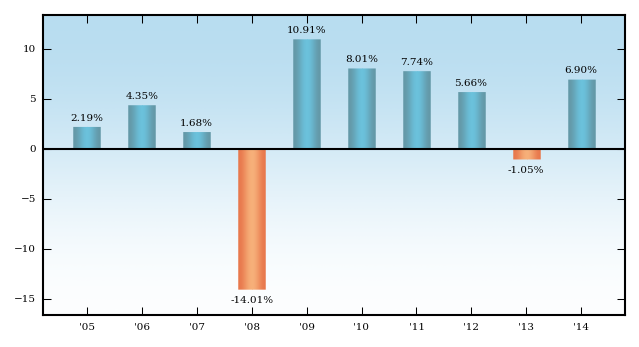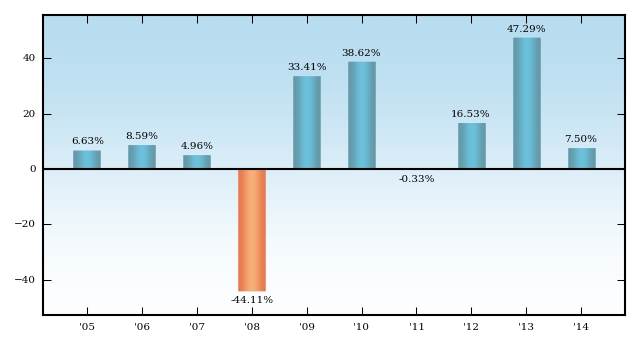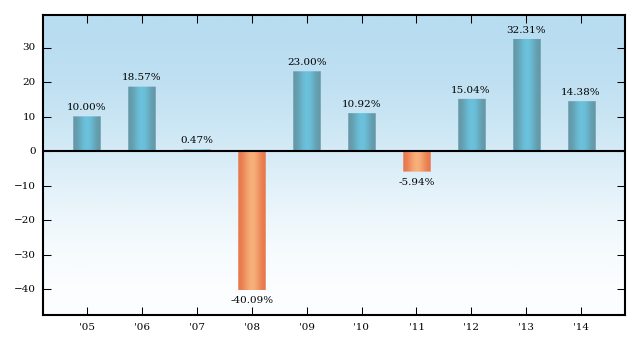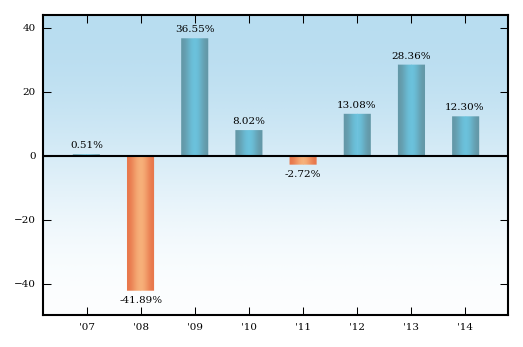| UBS Multi-Asset Income Fund | ||||||||||||||||||||||||||||||||||||||||||||||||||||||||||||||
| UBS Multi-Asset Income Fund | ||||||||||||||||||||||||||||||||||||||||||||||||||||||||||||||
| Investment objective | ||||||||||||||||||||||||||||||||||||||||||||||||||||||||||||||
The Fund seeks to provide risk-managed income as its primary objective over the long term. | ||||||||||||||||||||||||||||||||||||||||||||||||||||||||||||||
| Fees and expenses | ||||||||||||||||||||||||||||||||||||||||||||||||||||||||||||||
These tables describe the fees and expenses that you may pay if you buy and hold shares of the Fund. You may qualify for a sales charge waiver or discount if you and your family invest, or agree to invest in the future, at least $100,000 in the Fund. More information about these and other discounts and waivers, as well as eligibility requirements for each share class, is available from your financial advisor and in "Managing your fund account" on page 28 of the Fund's prospectus and in "Reduced sales charges, additional purchase, exchange and redemption information and other services" on page 85 of the Fund's statement of additional information ("SAI"). | ||||||||||||||||||||||||||||||||||||||||||||||||||||||||||||||
| Shareholder fees (fees paid directly from your investment) | ||||||||||||||||||||||||||||||||||||||||||||||||||||||||||||||
| ||||||||||||||||||||||||||||||||||||||||||||||||||||||||||||||
| Annual fund operating expenses (expenses that you pay each year as a percentage of the value of your investment) | ||||||||||||||||||||||||||||||||||||||||||||||||||||||||||||||
| ||||||||||||||||||||||||||||||||||||||||||||||||||||||||||||||
| Example | ||||||||||||||||||||||||||||||||||||||||||||||||||||||||||||||
This example is intended to help you compare the cost of investing in the Fund with the cost of investing in other mutual funds. The example assumes that you invest $10,000 in the Fund for the time periods indicated and then sell all of your shares at the end of those periods unless otherwise stated. The example also assumes that your investment has a 5% return each year and that the Fund's operating expenses remain the same. The costs described in the example reflect the expenses of the Fund that would result from the contractual fee waiver and expense reimbursement agreement with the Advisor for the first year only. Although your actual costs may be higher or lower, based on these assumptions, your costs would be: | ||||||||||||||||||||||||||||||||||||||||||||||||||||||||||||||
| ||||||||||||||||||||||||||||||||||||||||||||||||||||||||||||||
| ||||||||||||||||||||||||||||||||||||||||||||||||||||||||||||||
| Portfolio turnover | ||||||||||||||||||||||||||||||||||||||||||||||||||||||||||||||
The Fund pays transaction costs, such as commissions, when it buys and sells securities (or "turns over" its portfolio). A higher portfolio turnover rate may indicate higher transaction costs and may result in higher taxes when Fund shares are held in a taxable account. These costs, which are not reflected in annual fund operating expenses or in the example, affect the Fund's performance. During the most recent fiscal year, the Fund's portfolio turnover rate was 86% of the average value of its portfolio. | ||||||||||||||||||||||||||||||||||||||||||||||||||||||||||||||
| Principal strategies | ||||||||||||||||||||||||||||||||||||||||||||||||||||||||||||||
Principal investments In order to achieve the Fund's objective, the Fund employs an asset allocation strategy that seeks to provide risk-managed income on a monthly basis by employing an asset allocation strategy that is designed to accommodate the Fund's targeted annual payout percentage. The Fund's investment strategy is designed to return to investors a targeted annual payout of 3%-6% based on the current and historic low yield interest rate environment over the past 5 years. The Advisor does not represent or guarantee that the Fund will meet the income goal. Under normal circumstances, the Fund seeks to provide risk-managed income on a monthly basis by employing an asset allocation strategy that is designed to accommodate the Fund's targeted annual payout percentage. The Fund will allocate its assets by investing in a combination of equities, nominal and inflation-linked fixed income securities, third-party exchange-traded funds ("ETFs"), real estate investment trusts ("REITs"), exchange-listed options, and other exchange-traded and over-the-counter ("OTC") derivative securities. Under normal or neutral market conditions, the Advisor will allocate approximately 65% of the Fund's total assets to fixed income investments, 20% of the Fund's assets to equity investments of companies in developed (including the United States) or emerging markets countries and 15% of the Fund's assets to US and non-US real estate securities (including REITs). The Fund's asset allocation targets are not fixed which gives the Advisor the flexibility to meet the Fund's investment goal based on market conditions. If warranted by market conditions, the Advisor may invest 100% of the Fund's assets in fixed income investments. In addition, the Fund's allocations to US and non-US equity and real estate securities may be greater or lesser than the allocations described above based on the Advisor's assessment of the markets. The Fund may obtain exposure to fixed income investments by investing in securities directly or by purchasing third-party ETFs that invest in fixed income securities. The Fund's fixed income investments may include debt securities of governments throughout the world (including the United States), their agencies and instrumentalities, debt securities of corporations (including inflation-linked notes and catastrophe bonds), floating rate notes, mortgage-backed securities and asset-backed securities. Catastrophe bonds are types of insurance-linked or event-linked securities that pay off on the occurrence of specific events, usually natural disasters. The third-party ETFs in which the Fund invests could have exposure to senior bank loans. These securities may be either investment grade or high yield (lower-rated or "junk bonds") securities. The Fund may invest without limitation in investment grade debt securities, including corporate debt securities and inflation-linked securities, and may invest up to 50% of its total assets in lower-rated bonds of corporations and up to 20% of its total assets in a combination of other lower-rated bonds, including lower-rated municipal bonds and lower-rated non-US government bonds (including those of emerging markets countries). The Fund may invest in fixed income investments of any maturity. The Fund may obtain exposure to equity investments by investing in securities directly or by purchasing third-party ETFs that invest in equity securities. The Fund may invest up to 50% of its total assets either directly or through investment in ETFs in the common stock and preferred stock of companies in developed countries (including the United States). In addition, the Fund may invest up to 25% of its total assets in real estate securities of US and non-US issuers. Real estate securities may include interests in REITs that own properties or make construction or mortgage loans, securities of companies with substantial real estate holdings and other companies whose products and services are related to the real estate industry, such as building supply manufacturers, mortgage lenders, or mortgage service companies. The Fund's equity investments may include companies and REITs of any market capitalization, including small capitalization (below $3 billion). Within these limitations, the Fund may invest up to 15% of its assets in infrastructure securities and up to 20% of its assets in equity securities of emerging markets issuers. The Fund may obtain exposure to equity, real estate or fixed income investments indirectly by investing in ETFs. An ETF is a type of exchange-traded investment company. Ordinarily, the Investment Company Act of 1940, as amended (the "1940 Act") and the regulations promulgated thereunder prohibit an investment company from buying more than 3% of the shares of any other single investment company, investing more than 5% of its assets in any other single investment company, or investing more than 10% of its assets in other investment companies generally. However, certain ETFs have obtained exemptive orders from the SEC permitting other investment companies, such as the Fund to acquire their securities in excess of the percentage limits of the 1940 Act. The Fund intends to rely on such exemptive orders from time to time. The Fund may, but is not required to, use exchange-traded or OTC derivative instruments for risk management purposes or as part of the Fund's investment strategies. Generally, derivatives are financial contracts whose value depends upon, or is derived from, the value of an underlying asset, reference rate, or index, and may relate to stocks, bonds, interest rates, currencies or currency exchange rates, and related indexes. The Fund may invest in structured notes in order to generate income for the Fund. The Fund also may write covered call options on ETFs to generate cash flow for the purpose of meeting the Fund's target payment goal, as well as for hedging purposes. Other derivatives in which the Fund may invest include index options, futures, forward agreements and swap agreements (specifically, interest rate, currency and total return swaps). All of these derivatives may be used for risk management purposes, such as hedging against a specific security or currency, or to manage or adjust the risk profile of the Fund. In addition, all of the derivative instruments listed above may be used for investment (non-hedging) purposes to earn income; to enhance re-turns; to replace more traditional direct investments; to obtain exposure to certain markets; or to establish net short positions for individual markets, currencies or securities. Futures on indices, forward agreements and interest rate swaps may also be used to adjust the Fund's portfolio duration. In addition to other income-producing investments, the Fund may write covered call options on ETFs for the purpose of generating additional cash flow that could contribute to the overall payout of the Fund. When the Fund writes a call option on an ETF that it holds, the call option generates cash flow in the form of a premium paid by the option buyer while potentially limiting the upside of the Fund's investment in the ETF in the future. The Fund also actively manages its currency exposure and attempts to generate positive returns and manage risk through sophisticated currency management techniques, including hedging strategies. The Advisor could employ a positive carry currency strategy whereby higher yielding currencies are bought in exchange for lower yielding currencies as a way to potentially enhance returns. These decisions are integrated with analysis of global market and economic conditions. Management process The Advisor will manage the Fund's portfolio using the following investment process as described below: The Fund seeks to provide diversification across a variety of income producing asset classes in a multi-asset framework. The Fund's asset allocation strategy is designed to accommodate the Fund's targeted annual payout while taking into account the Fund's desired level of capital appreciation. Risk diversification and dynamic distribution between the various asset classes have the objective of creating a more stable capital and income base through various market cycles and interest rate environments. Asset allocation decisions are primarily driven by the Advisor's assessment of valuation and prevailing market conditions in the United States and around the world. Using a systematic approach, the portfolio management team analyzes the asset classes and investments across equities, fixed income, and alternative asset classes (including currency), considering both fundamental valuation, economic and other market indicators. Regarding valuation, the Advisor evaluates whether asset classes and investments are attractively priced relative to fundamentals. The starting point is to assess the intrinsic value of an asset class, as determined by the fundamentals that drive an asset class' future cash flow. The intrinsic value represents a long term anchor point to which the Advisor believes the asset class will eventually revert. Fair value estimates of asset classes and markets are an output of the Advisor's proprietary valuation models. Discounting the asset's future cash flow using a discount rate that appropriately reflects the inherent investment risk associated with holding the asset gives the asset's fair value. The competitive advantage of the Advisor's models lies in the quality and consistency of the inputs used and, therefore, the reliability of valuation conclusions. The discrepancy between actual market level and fair value (the price/value discrepancy) is the primary valuation signal used in identifying investment opportunities. Next, the Advisor assesses additional market indicators and considers the effect that other determinants of economic growth and overall market volatility will have on each asset class. While in theory price/value discrepancies may resolve themselves quickly and linearly, in practice price/value discrepancy can grow larger before it resolves. While valuation models have proven effective at identifying longer-term price/value discrepancies, in the shorter term other factors can swamp valuation considerations. Thus, the Advisor incorporates an additional discipline in their idea generation process. The Advisor refers to this additional step in its idea generation process as market behavior analysis. Adding this step helps the Advisor to understand what other market indicators might drive the market towards or away from fundamental value. The Advisor performs systematic analysis of non-valuation drivers using models measuring sentiment, momentum and flows, market stress, the stage of the economic cycle, as well as an assessment of the general macroeconomic landscape. Conversely, valuation considerations tend to dominate when an asset class is substantially above or below fair value, but the Advisor recognizes that the use of market behavior analysis during these periods is very important to helping improve the timing in and out of these asset classes with very stretched valuations. The asset allocation process is structured around the Asset Allocation & Currency (AAC) Investment Committee (the "AAC Committee") meetings, which provides a forum for debate and the exploration of all ramifications of any investment decision, rather than aiming for a consensus to be reached. Instead, any voting member of the AAC Committee can sponsor a trade idea, preparing a detailed investment thesis to support the view. An investment thesis has to define the investment rationale based on valuation and market behavioral influences, the time scale for it being realized, the transaction costs and the potential milestones the Advisor would expect to evaluate whether or not the view is correct. The sponsor is then responsible for convincing another member of the AAC Committee to support the idea as co-sponsor. Bottom up selection across active equity and fixed income markets can be utilized as part of the asset allocation process at the asset class level. With respect to specific equity securities for inclusion in the Fund's equity asset classes, the Advisor may utilize fundamental valuation, quantitative and growth-oriented strategies. The Advisor's bottom up fixed income security selection strategy combines judgments about the absolute value of the fixed income universe and the relative value of issuer sectors, maturity intervals, security durations, credit qualities and coupon segments, as well as specific circumstances facing the issuers of fixed income securities. The Advisor uses both fundamental valuation and market behavior analysis to make the two-pronged determination of risk budget and risk allocation. The Advisor works closely with the Risk Management team, members of which attend the AAC Committee meetings, to determine the appropriate amount of risk capital to allocate to the underlying trade ideas given the strategy's risk budget and objectives, prevailing investment opportunities, and other strategy exposures. To assist in this process the Risk Management team performs scenario and correlation analysis to better understand the risk and diversification of the overall strategy, and ensures that unintended factor exposures are identified, managed and monitored. | ||||||||||||||||||||||||||||||||||||||||||||||||||||||||||||||
| Main risks | ||||||||||||||||||||||||||||||||||||||||||||||||||||||||||||||
All investments carry a certain amount of risk and the Fund cannot guarantee that it will achieve its investment objective. You may lose money by investing in the Fund. An investment in the Fund is not a deposit of the bank and is not insured or guaranteed by the Federal Deposit Insurance Corporation or any other government agency. Below are some of the specific risks of investing in the Fund. Asset allocation risk: The risk that the Fund may allocate assets to an asset category that performs poorly relative to other asset categories. Market risk: The risk that the market value of the Fund's investments may fluctuate, sometimes rapidly or unpredictably, as the stock and bond markets fluctuate. Market risk may affect a single issuer, industry, or sector of the economy, or it may affect the market as a whole. Interest rate risk: An increase in prevailing interest rates typically causes the value of fixed income securities to fall. Changes in interest rates will likely affect the value of longer-duration fixed income securities more than shorter-duration securities and higher quality securities more than lower quality securities. When interest rates are falling, some fixed income securities provide that the issuer may repay them earlier than the maturity date, and if this occurs the Fund may have to reinvest these repayments at lower interest rates. The risks associated with rising interest rates may be more pronounced in the near future due to the current period of historically low rates. Credit risk: The risk that the Fund could lose money if the issuer or guarantor of a fixed income security, or the counterparty to or guarantor of a derivative contract, is unable or unwilling to meet its financial obligations. This risk is likely greater for lower quality investments than for investments that are higher quality. High yield bond risk: The risk that the issuer of bonds with ratings of BB (Standard & Poor's Financial Services LLC ("S&P")) or Ba (Moody's Investors Service, Inc. ("Moody's")) or below, or deemed of equivalent quality, will default or otherwise be unable to honor a financial obligation (also known as lower-rated or "junk bonds"). These securities are considered to be predominately speculative with respect to an issuer's capacity to pay interest and repay principal in accordance with the terms of the obligations. Lower-quality bonds are more likely to be subject to an issuer's default or downgrade than investment grade (higher quality) bonds. Distribution of income risk: The Fund's monthly income payments will be made from the Fund's interest income, dividends, and currency allocations and will reduce the amount of assets available for investment by the Fund. The Fund's investment losses may reduce the amount of future distributions an investor will receive from the Fund thereby reducing the distribution yield. The dollar amount of the Fund's monthly income payments could vary substantially from one year to the next and over time depending on several factors, including the performance of the financial markets in which the Fund invests, the allocation of Fund assets across different asset classes and investments, the performance of the Fund's underlying strategies, and the amount and timing of prior distributions by the Fund. It is also possible for payments to go down substantially or significantly fluctuate from one year to the next, month over month, and over time depending on the timing of an investor's investments in the Fund. Any redemptions will proportionately reduce the amount of future cash income payments to be received from the Fund. There is no guarantee that the Fund will make monthly income payments to its shareholders or, if made, that the Fund's monthly income payments to shareholders will remain at a fixed amount. Investing in ETFs risk: The Fund's investment in ETFs may subject the Fund to additional risks than if the Fund would have invested directly in the ETF's underlying securities. These risks include the possibility that an ETF may experience a lack of liquidity that can result in greater volatility than its underlying securities; an ETF may trade at a premium or discount to its net asset value; or an ETF may not replicate exactly the performance of the benchmark index it seeks to track. In addition, investing in an ETF may also be more costly than if a Fund had owned the underlying securities directly. The Fund, and indirectly, shareholders of the Fund, bear a proportionate share of the ETF's expenses, which include management and advisory fees and other expenses. In addition, the Fund will pay brokerage commissions in connection with the purchase and sale of shares of ETFs. US Government securities risk: There are different types of US government securities with different levels of credit risk, including the risk of default, depending on the nature of the particular government support for that security. For example, a US government-sponsored entity, although chartered or sponsored by an Act of Congress, may issue securities that are neither insured nor guaranteed by the US Treasury and are therefore riskier than those that are. Illiquidity risk: The risk that investments cannot be readily sold at the desired time or price, and the Fund may have to accept a lower price or may not be able to sell the security at all. An inability to sell securities can adversely affect the Fund's value or prevent the Fund from taking advantage of other investment opportunities. Liquid portfolio investments may become illiquid or less liquid after purchase by the Fund due to low trading volume, adverse investor perceptions and/or other market developments. Illiquidity risk includes the risk that the Fund will experience significant net redemptions at a time when it cannot find willing buyers for its portfolio securities or can only sell its portfolio securities at a material loss. Illiquidity risk can be more pronounced in periods of market turmoil. Foreign investing risk: The value of the Fund's investments in foreign securities may fall due to adverse political, social and economic developments abroad and due to decreases in foreign currency values relative to the US dollar. Investments in foreign government bonds involve special risks because the Fund may have limited legal recourse in the event of default. Also, foreign securities are sometimes less liquid and more difficult to sell and to value than securities of US issuers. These risks are greater for investments in emerging market issuers. In addition, investments in emerging market issuers may decline in value because of unfavorable foreign government actions, greater risks of political instability or the absence of accurate information about emerging market issuers. Limited capitalization risk: The risk that securities of smaller capitalization companies tend to be more volatile and less liquid than securities of larger capitalization companies. This can have a disproportionate effect on the market price of smaller capitalization companies and affect the Fund's ability to purchase or sell these securities. In general, smaller capitalization companies are more vulnerable than larger companies to adverse business or economic developments and they may have more limited resources. Real estate securities and REITs risk: The risk that the Fund's performance will be affected by adverse developments in the real estate industry. Real estate values may be affected by a variety of factors, including: local, national or global economic conditions; changes in zoning or other property-related laws; environmental regulations; interest rates; tax and insurance considerations; overbuilding; property taxes and operating expenses; or declining values in a neighborhood. Similarly, a REIT's performance depends on the types, values, locations and management of the properties it owns. In addition, a REIT may be more susceptible to adverse developments affecting a single project or market segment than a more diversified investment. Loss of status as a qualified REIT under the US federal tax laws could adversely affect the value of a particular REIT or the market for REITs as a whole. Derivatives risk: The value of "derivatives"—so called because their value "derives" from the value of an underlying asset, reference rate or index—may rise or fall more rapidly than other investments. It is possible for the Fund to lose more than the amount it invested in the derivative. The risks of investing in derivative instruments also include market risk, management risk and counterparty risk (which is the risk that a counterparty to a derivative contract is unable or unwilling to meet its financial obligations). Derivatives relating to fixed income markets are especially susceptible to interest rate risk and credit risk. In addition, many types of swaps and other non-exchange traded derivatives may be subject to liquidity risk, credit risk and mispricing or valuation complexity. These derivatives risks are different from, and may be greater than, the risks associated with investing directly in securities and other instruments. Leverage risk associated with financial instruments: The use of financial instruments to increase potential returns, including derivatives used for investment (non-hedging) purposes, may cause the Fund to be more volatile than if it had not been leveraged. The use of leverage may also accelerate the velocity of losses and can result in losses to the Fund that exceed the amount originally invested. Management risk: The risk that the investment strategies, techniques and risk analyses employed by the Advisor may not produce the desired results. | ||||||||||||||||||||||||||||||||||||||||||||||||||||||||||||||
| Performance | ||||||||||||||||||||||||||||||||||||||||||||||||||||||||||||||
Risk/return bar chart and table The performance information that follows shows the Fund's performance information in a bar chart and an average annual total returns table. The information provides some indication of the risks of investing in the Fund by showing changes in the Fund's performance for the year 2013 and by showing how the Fund's average annual total returns compare with those of a broad measure of market performance. Index reflects no deduction for fees, expenses or taxes. The Fund's past performance (before and after taxes) is not necessarily an indication of how the Fund will perform in the future. Updated performance for the Fund is available at www.ubs.com/us-mutualfundperformance. After-tax returns are calculated using the historical highest individual federal marginal income tax rates and do not reflect the impact of state and local taxes. Actual after-tax returns depend on an investor's tax situation and may differ from those shown. In addition, the after-tax returns shown are not relevant to investors who hold Fund shares through tax-deferred arrangements, such as 401(k) plans or individual retirement accounts. After-tax returns for other classes will vary from the Class P shares' after-tax returns shown. | ||||||||||||||||||||||||||||||||||||||||||||||||||||||||||||||
| Total return UBS Multi-Asset Income Fund Annual Total Returns of Class P Shares (2013 is the Fund's first full year of operations) | ||||||||||||||||||||||||||||||||||||||||||||||||||||||||||||||
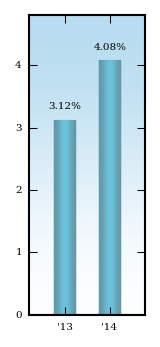
| ||||||||||||||||||||||||||||||||||||||||||||||||||||||||||||||
Total return January 1 - September 30, 2015: (3.84)% | ||||||||||||||||||||||||||||||||||||||||||||||||||||||||||||||
| Average annual total returns (figures reflect sales charges) (for the periods ended December 31, 2014) | ||||||||||||||||||||||||||||||||||||||||||||||||||||||||||||||
| ||||||||||||||||||||||||||||||||||||||||||||||||||||||||||||||
